
JOURNAL OF STATISTICAL PHYSICS
Scope & Guideline
Illuminating the pathways of theoretical developments in physics.
Introduction
Aims and Scopes
- Statistical Mechanics and Thermodynamics:
The journal covers fundamental principles of statistical mechanics, including the derivation of thermodynamic quantities from microscopic models, phase transitions, and critical phenomena. - Dynamical Systems and Chaos:
Research related to dynamical systems, including chaotic behaviors, ergodicity, and the study of complex trajectories in various physical systems. - Quantum Statistical Physics:
Exploration of quantum phenomena in statistical physics, with a focus on quantum phase transitions, quantum entanglement, and the thermodynamic properties of quantum systems. - Complex Systems and Networks:
The journal publishes studies on complex systems, including models of interacting particles, network dynamics, and applications of statistical physics in biological systems. - Mathematical Methods in Physics:
Emphasis on the mathematical foundations necessary for statistical physics, including stochastic processes, random walks, and advanced computational techniques. - Non-equilibrium Statistical Mechanics:
Investigation of systems away from equilibrium, including studies of transport phenomena, relaxation processes, and fluctuations in non-equilibrium states.
Trending and Emerging
- Quantum Information and Entanglement:
An increasing number of papers are exploring the intersection of statistical physics and quantum information theory, particularly focusing on entanglement measures and their implications for thermodynamics. - Non-equilibrium Dynamics and Fluctuations:
There is a significant rise in research addressing non-equilibrium dynamics, including studies of stochastic processes, fluctuation theorems, and the dynamics of systems far from equilibrium. - Machine Learning and Data-Driven Approaches:
The integration of machine learning techniques into statistical physics has emerged as a trending theme, with researchers applying these methods to analyze complex data and model systems. - Complex Networks and Interdisciplinary Applications:
Publications increasingly focus on the application of statistical physics to complex networks, including social, biological, and technological networks, reflecting a broader interdisciplinary approach. - Topological Phenomena in Statistical Physics:
Emerging interest in topological aspects of physical systems, particularly in relation to phase transitions and quantum states, is becoming a prominent area of research.
Declining or Waning
- Classical Statistical Mechanics:
There is a noticeable reduction in papers focusing solely on classical statistical mechanics, possibly due to the increasing interest in quantum systems and non-equilibrium dynamics. - Simple Models and Exact Solutions:
Research centered on simple models with exact solutions has become less frequent, as the focus shifts towards more complex systems that require numerical simulations or advanced analytical techniques. - Equilibrium Properties of Systems:
Papers primarily discussing equilibrium properties of systems, such as equilibrium phase diagrams and traditional thermodynamic limits, have seen a decrease in favor of non-equilibrium and dynamical studies.
Similar Journals

RUSSIAN JOURNAL OF MATHEMATICAL PHYSICS
Fostering Dialogue in the World of Physics and MathematicsRUSSIAN JOURNAL OF MATHEMATICAL PHYSICS is a premier academic journal published by PLEIADES PUBLISHING INC, dedicated to advancing the fields of mathematical physics and statistical and nonlinear physics. With a commendable Impact Factor in the Q2 category for both disciplines as of 2023, the journal serves as an essential platform for researchers, professionals, and students to explore innovative theoretical and applied aspects of these fields. Established between 1996 and 1997, and resuming publication in 1999 through to 2024, the journal reflects a long-standing commitment to disseminating high-quality scholarship. The Scopus rankings place it at a competitive position, ranking #23 out of 85 in Mathematical Physics and #26 out of 62 in Statistical and Nonlinear Physics, showcasing its relevance and influence. While currently not offering open access, the journal’s audience is encouraged to engage with its substantive research and contribute to the ongoing dialogue in mathematical physics, fostering a deeper understanding of complex physical phenomena.
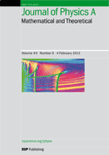
Journal of Physics A-Mathematical and Theoretical
Bridging Theory and Application in Mathematical PhysicsThe Journal of Physics A-Mathematical and Theoretical, published by IOP Publishing Ltd, is a premier peer-reviewed journal dedicated to advancing the understanding of mathematical physics, modeling, and simulation methods within the dynamic field of physics and astronomy. Established in the United Kingdom, this journal has made significant contributions over the years, maintaining a strong reputation as a Q1 and Q2 ranked journal across various categories, reflecting its influence in the scientific community. With a focus on innovative and theoretical approaches, it provides a platform for researchers, professionals, and students to disseminate their findings and engage with groundbreaking methodologies. Despite its lack of open access options, the journal's high impact factor and Scopus rankings, which place it in the top percentiles across multiple disciplines, underscore its critical role in fostering scholarly communication and collaboration in mathematical and theoretical physics. As we move through its converged years from 2007 to 2024, the Journal of Physics A continues to be a pivotal contributor to the landscape of contemporary physics, stimulating discussions and advancing knowledge in an ever-evolving realm.

Physics
Innovating Knowledge: Your Gateway to Physics DiscoveriesPhysics, published by MDPI, is an open-access journal that commenced in 2019 and has quickly established itself as a significant contributor to the field of physics and astronomy. With a respectable impact factor and categorized in the Q2 quartile for 2023, this journal serves a broad spectrum of topics within the discipline, fostering innovative research and insights. As part of the MDPI portfolio, known for promoting high-quality, peer-reviewed research, Physics aims to provide a platform for scholars, professionals, and students to publish their findings and engage with contemporary debates in the field. The journal's accessibility, paired with its commitment to scientific excellence, ensures that research is readily available to a global audience, which is crucial for advancing knowledge and collaboration in physics. Located in the heart of Switzerland at ST ALBAN-ANLAGE 66, CH-4052 BASEL, the journal enjoys a position at the nexus of cutting-edge research and academia.
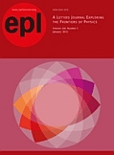
EPL
Elevating Knowledge in Physics and AstronomyEPL, a prominent journal published by IOP Publishing Ltd, stands at the forefront of the field of Physics and Astronomy. With a history of impactful contributions stretching from 1986 to 2024, EPL serves as a dynamic platform for researchers to disseminate their pioneering findings and innovative ideas. The journal, with a current category ranking of Q2 among its peers and a competitive Scopus rank of #101 out of 243 in the general physics and astronomy category, reflects its substantial reputation and contribution to the scientific community. Although it operates under a traditional subscription model, EPL's reach is extensive, enabling access to a diverse readership that includes academicians, industry professionals, and students alike. By fostering interdisciplinary collaboration and promoting rigorous research, EPL continues to play a vital role in shaping the future of physics and astronomy.
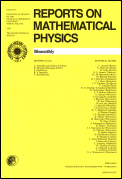
REPORTS ON MATHEMATICAL PHYSICS
Advancing Insights in Mathematical PhysicsREPORTS ON MATHEMATICAL PHYSICS is a distinguished journal published by PERGAMON-ELSEVIER SCIENCE LTD, focusing on the intricate interplay between mathematics and physics. Established in the United Kingdom, this journal has been contributing to the academic community since its inception, publishing significant research findings that explore the theoretical underpinnings of physical phenomena. With an ISSN of 0034-4877 and an E-ISSN of 1879-0674, the journal maintains a consistent publishing history, converging research from 1970 to 2024. It is currently ranked Q3 in both Mathematical Physics and Statistical and Nonlinear Physics categories, reflecting its commitment to maintaining a high standard of scholarly work. Although it lacks Open Access options, its targeted audience of researchers, professionals, and students will find invaluable insights into advanced mathematical methods, statistical applications, and innovative approaches in physics. With its esteemed reputation and critical role in the field, REPORTS ON MATHEMATICAL PHYSICS continues to be an essential resource for those seeking to deepen their understanding of mathematical applications in physical systems.

Physical Review Research
Bridging ideas and innovation in physics and astronomy.Physical Review Research, published by the American Physical Society, is a premier open access journal dedicated to the dissemination of high-quality research across all areas of physics and astronomy. Since its inception in 2019, this journal has quickly established itself as a vital platform for researchers, achieving a prestigious Q1 ranking in the dynamics of Physics and Astronomy (miscellaneous) and holding a commendable position in the Scopus Rankings with a rank of #29 out of 243, placing it in the 88th percentile. With the commitment to fostering scientific collaboration and transparency, Physical Review Research offers unrestricted access to valuable findings, enabling researchers, professionals, and students alike to engage with cutting-edge contributions in general physics and astronomy. As it converges into its forthcoming years of publication, the journal remains dedicated to showcasing rigorous research and innovative ideas that drive the field forward.
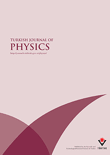
Turkish Journal of Physics
Shaping the future of physics through knowledge sharing.Turkish Journal of Physics, established in 1994 and published by the Tubitak Scientific & Technological Research Council Turkey, is a prominent platform for the dissemination of innovative research in the field of physics and related areas. With an ISSN of 1300-0101 and an E-ISSN of 1303-6122, this journal has carved a niche in the academic community, evidenced by its ranking within the Q3 category in the 2023 evaluation of Physics and Astronomy. As it converges its published works toward the year 2024, researchers and scholars are encouraged to engage with its rich repertoire of studies that covers general physics and astronomy, currently holding a Scopus rank of #96 out of 243, placing it in the top 60th percentile. The Turkish Journal of Physics serves as a vital resource for advancing knowledge, fostering collaborative research, and providing insights into contemporary advancements in the discipline. While it operates under a subscription model, the quality and impact of its peer-reviewed articles make it an essential read for professionals and students alike, looking to stay informed on critical developments within the physics community.

LETTERS IN MATHEMATICAL PHYSICS
Illuminating the complexities of physical phenomena through mathematics.LETTERS IN MATHEMATICAL PHYSICS, published by Springer, stands as a pivotal platform in the realm of mathematical and statistical physics. With a commitment to disseminating innovative research findings since its inception in 1975, this journal serves both established and emerging scholars by fostering a multidisciplinary dialogue that is vital for the advancement of theoretical concepts and practical applications. The journal boasts an impressive Q1 ranking in both Mathematical Physics and Statistical and Nonlinear Physics categories as of 2023, reflecting its significant impact in these fields, supported by a strong Scopus ranking of 36th and 37th in respective categories. Although it operates on a traditional access model, the journal’s convergence until 2024 ensures a rich repository of literature that aids researchers, professionals, and students in navigating the complexities of mathematical physics. With its strategic location in the Netherlands, LETTERS IN MATHEMATICAL PHYSICS is poised to continue its tradition of excellence, encouraging contributions that deepen the understanding of mathematical frameworks underlying physical phenomena.
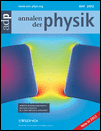
ANNALEN DER PHYSIK
Pioneering Insights in the World of PhysicsANNALEN DER PHYSIK, a prestigious journal published by WILEY-V C H VERLAG GMBH, stands as a cornerstone of the field of physics and astronomy since its inception in 1799. With an ISSN of 0003-3804 and an E-ISSN of 1521-3889, this journal provides a platform for innovative research and critical discourse across various domains of physics. Annalen der Physik is currently ranked in the Q2 category for general physics and astronomy, occupying rank #76 out of 243 in Scopus, placing it within the 68th percentile. This indicates its significant impact and the quality of research it publishes. Although the journal does not offer Open Access options, its robust historical lineage and ongoing contributions ensure that it continues to be an essential resource for researchers, professionals, and students alike. For those seeking to stay at the forefront of contemporary physics research, ANNALEN DER PHYSIK represents a vital source of knowledge, innovation, and scholarly communication.

INTERNATIONAL JOURNAL OF MODERN PHYSICS A
Exploring the cosmos and the building blocks of matter.INTERNATIONAL JOURNAL OF MODERN PHYSICS A, published by WORLD SCIENTIFIC PUBL CO PTE LTD, stands as a pivotal platform in advancing the frontiers of research within the fields of Astronomy and Astrophysics, Atomic and Molecular Physics, and Nuclear and High Energy Physics. Established in 1989, this journal has systematically contributed to the scientific community, with a demonstrated impact as indicated by its Q2 category rankings across these critical disciplines in 2023. Researchers and professionals are encouraged to engage with its rigorous peer-reviewed content, fostering a deeper understanding of modern physics theories and experimental breakthroughs. Although the journal operates under a conventional access model, it remains a vital resource for those seeking to disseminate their findings and stay abreast of cutting-edge developments. With an emphasis on quality and breadth of research, the journal continues to attract submissions from leading physicists and scholars, enhancing its reputation as a key academic resource.